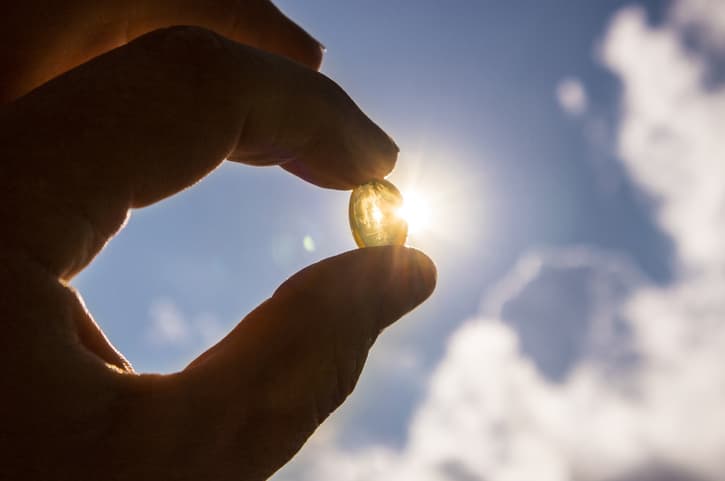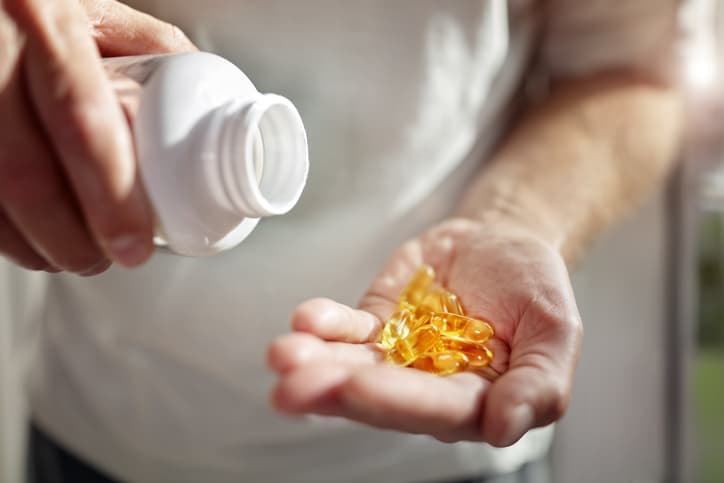Unless you’re an extremely picky eater, you’ve likely never even considered the possibility that you could be lacking the proper levels of certain vitamins. Considering that roughly 35% of adults in the United States have a vitamin D deficiency, this could be worth looking into. Keep reading to learn about the importance of vitamin D.
What does vitamin D do?

According to the Mayo Clinic, vitamin D is crucial to a healthy body because, without vitamin D, the body cannot absorb calcium, which is required for maintaining healthy bones. Vitamin D is also important because it supports proper cellular activity (including the cells in the brain), muscle health, and immune system health. Another bonus of vitamin D is that it has antioxidant and anti-inflammatory properties.
Are there vitamin D benefits?
According to the Mayo Clinic, vitamin D findings and research suggest that vitamin D may be helpful with:
- Possible cancer prevention.
- Possible prevention of cognitive decline.
- Possible prevention of Multiple Sclerosis (MS) when taken long-term.
- The treatment of osteomalacia (softening of the bones) and certain bone disorders.
- Prevention of osteoporosis and bone fractures when taken with calcium.
Bonus immune function:
A study published by the National Library of Medicine found evidence that vitamin D may also reduce the risk of infection and/or complications from the seasonal flu and COVID-19, reducing the chances of developing pneumonia from either.
What causes vitamin D deficiency?
Generally, vitamin D deficiency simply means that you’re not getting enough vitamin D. A common cause of low vitamin D is a lack of sunlight and not consuming enough vitamin D foods. However, according to the Cleveland Clinic, there are other issues that can cause it as well, such as:
- Specific medical conditions.
- Some medications.
- Some weight loss pills or surgeries.
- Liver disease.
- Kidney disease.
- Crohn’s disease.
- Celiac disease.
- Cystic fibrosis.
- Obesity.
What are the vitamin D deficiency symptoms?
While children with a vitamin D deficiency are at risk for serious complications like rickets (incorrect growth of the bones), adults with low vitamin D levels may not have any symptoms at all.
The Cleveland Clinic states that low vitamin D symptoms can include:
- Weakness and fatigue.
- Muscle pain, such as spasms, weakness, and soreness.
- Discomfort in your bones.
- Depression.
Who is at risk of vitamin D deficiency?
According to the Mayo Clinic, anyone can have low vitamin D levels. However, the ones with the most risk of vitamin D deficiency are:
- The elderly, due to the body becoming less able to produce vitamin D from sunlight with age.
- Those who seldom go outdoors.
- Those with darker skin tones.
- Infants (especially those who solely breastfeed).
How much vitamin D should I take?

You can get vitamin D from a few sources, including sunlight, certain foods or drinks, and/or a vitamin D supplement.
During the fall and winter months, it could be more difficult to maintain vitamin D levels due to the decrease in the sunshine. A vitamin D supplement could improve immune function during cold and flu season and stave off low vitamin D levels when the sun isn’t out as much. Talk to your doctor to see if this is a good option for you.
How much vitamin D per day?
According to the Cleveland Clinic, between the ages of 1-70, you should consume 600 IU (international units) of vitamin D daily. After 70, you should begin to consume 800 IU per day.
What foods are high in vitamin D?
While it can be difficult to get enough vitamin D from your diet alone, there are quite a few vitamin D foods. The greatest way to get enough vitamin D in your diet is to maintain a balanced diet of healthy foods from all food groups (including some fortified foods).
Foods high in vitamin D include:
- Cereals with 10% of your daily value of vitamin D added.
- Egg yolks.
- Milk with added vitamin D.
- Orange juice with added vitamin D.
- Salmon.
- Canned sardines.
- Yogurt with 20% of your daily value of vitamin D.
- Swiss cheese.
- Canned tuna.
- Cow liver.
- Cod liver oil.
- Margarine with vitamin D added.
- Swordfish.
Is it possible to consume too much vitamin D?
While it is rare, consuming too much vitamin D is possible and can result in a condition called hypercalcemia (when there is too much calcium in your blood).
Vitamin D toxicity, according to the Cleveland Clinic, can result in the following symptoms:
- Increased thirst.
- A lack of appetite.
- Constipation.
- Confusion.
- Issues with balance.
- Difficulty with speech.
According to the Mayo Clinic, you can also experience the following with vitamin D toxicity:
- Increased urgency to pee.
- Nausea.
- Vomiting.
- Weakness.
- Discomfort in your bones.
- Calcium “stones” in your kidneys.
The Mayo Clinic notes that it is not possible to get too much vitamin D from your diet and/or time spent outdoors. Hypercalcemia is a result of the misuse of supplements. Because hypercalcemia can be serious, it is essential to talk to your doctor first before adding a vitamin D supplement to your diet.
After consulting with your doctor, adding a vitamin D supplement to your diet could be highly beneficial — especially if you struggle to get outdoors to soak up those rays, are a picky eater, or have been known to struggle during the winter months. Vitamin D is vital to bone and immune system health and has many fantastic preventative properties.
Citations:
Grant, W., et al. (2020). Evidence that Vitamin D Supplementation Could Reduce Risk of Influenza and COVID-19 Infections and Deaths.
How to Get More Vitamin D From Your Food. (2019).
Vitamin D. (2021).
Vitamin D Deficiency. (2022).
Zeratskz, K. (2022). What is vitamin D toxicity? Should I be worried about taking supplements?.